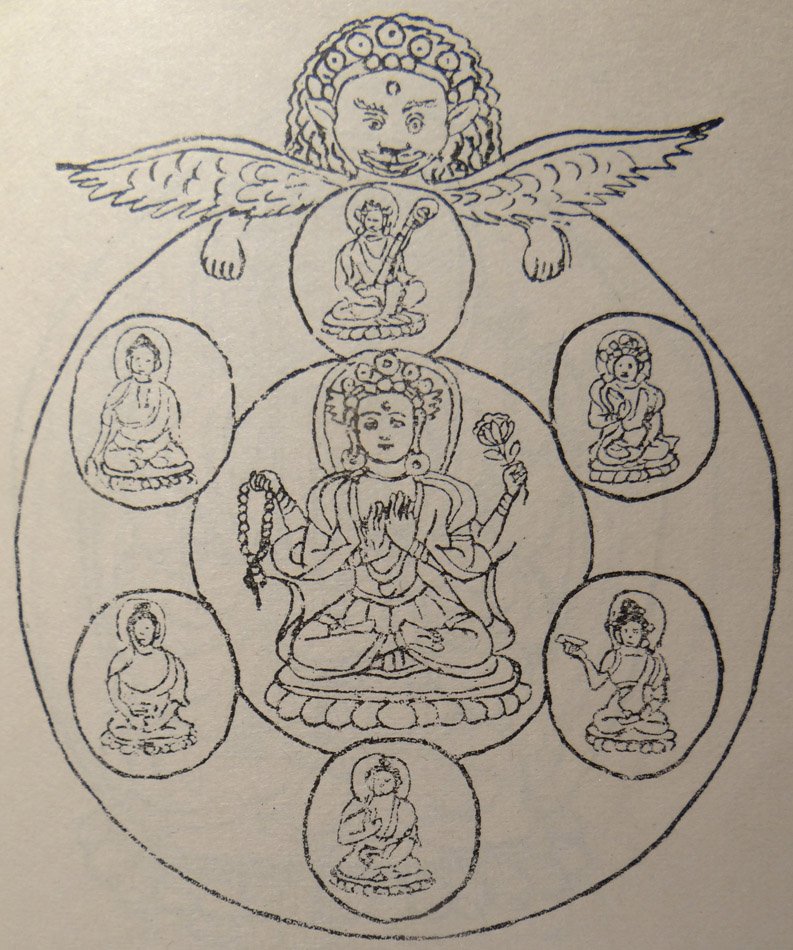The Indian Buddhist Iconography
by Benoytosh Bhattachacharyya | 1958 | 51,392 words | ISBN-10: 8173053138 | ISBN-13: 9788173053139
This page contains an iconography image of 108 forms of Avalokiteshvara (1): Hayagriva Lokeshvara and represents of the book Indian Buddhist Iconography, based on extracts of the Sadhanamala English translation. These plates and illustrations represent either photographs of sculptures or line-drawing reproductions of paintings or other representations of Buddhist artwork.
108 forms of Avalokiteśvara (1): Hayagrīva Lokeśvara
This is figure 1 in a series of 108 forms of Avalokiteśvara from the Macchandar Vahal, Kathmandu, Nepal.
1. Hayagrīva Lokeśvara. The god sits in the Vajraparyaṅka attitude on a lotus. He has four hands, out of which the two principal ones exhibit the Vyākhyāna pose. The second pair holds the rosary in the right hand and the lotus in the left. He is accompanied by six other gods and a dragon.
The Bodhisattva Avalokiteśvara (The Watchful Lord) also called Padmapāṇi (Lotus bearer) is the spiritual son of the Dhyāni Buddha Amitābha. He is one of the most popular Bodhisattvas of the Buddhist Pantheon having as many as 108 different forms [viz., Hayagrīva Lokeśvara].

